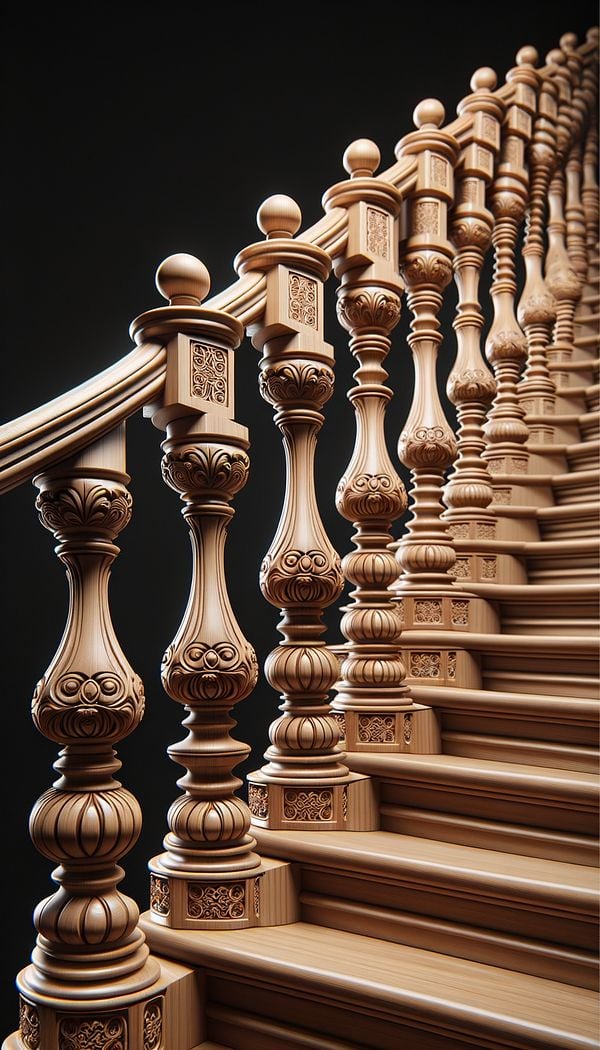What is a Baluster?
A baluster is a small, vertical post that supports the handrail of a staircase, balcony, or railing.
Description
In the world of interior design, a baluster plays a pivotal role in the structural and aesthetic integrity of staircases and railings. Typically constructed from materials such as wood, metal, or stone, balusters are not merely functional elements; they also contribute significantly to the overall design aesthetic. Arranged in a series, these vertical posts form what is called a balustrade, providing both safety and decoration to stairways, balconies, porches, and terraces.
The design of balusters can vary widely, from simple, streamlined forms to intricate, ornately carved details. This versatility allows them to seamlessly integrate into a wide range of interior design styles, from the classic elegance of traditional homes to the clean lines of contemporary spaces. Historically, balusters have been used not only for their practical purpose—preventing falls—but also as a means of expressing craftsmanship, status, and architectural style.
Choosing the right balusters can significantly impact the look and feel of a space. For instance, wooden balusters can add warmth and character to a home, while wrought iron or stone balusters might lend a sense of grandeur or solidity. The spacing, size, and pattern of balusters also play essential roles in achieving desired visual effects, making them key considerations in the design process.
Usage
In a classic Victorian home, intricately carved wooden balusters may line the sweeping staircase, contributing to the historical elegance of the interior. Conversely, a modern loft might feature sleek, minimalist metal balusters that enhance its contemporary aesthetic. Balusters are also commonly used in outdoor spaces, such as garden terraces or balconies, where they offer both safety and decorative appeal.
FAQs
-
Are balusters only used indoors?
No, balusters are used both indoors and outdoors, wherever railings or handrails are needed for safety or decorative purposes.
-
Can balusters be custom designed?
Yes, balusters can be custom designed to fit specific architectural styles, themes, or personal preferences, allowing for unique and personalized expressions of design.
-
What materials are commonly used to make balusters?
Common materials for balusters include wood, metal, and stone, each offering different aesthetic and structural qualities.
Practical Application
When selecting balusters for a design project, consider not only their material and design but also the requirements of the space. Ensure the chosen balusters comply with local building codes, especially regarding safety regulations and minimum spacing. Experiment with different patterns and materials to achieve the desired aesthetic and functionality. Regular maintenance, such as painting or sealing, is essential to preserve the appearance and integrity of balusters over time.
-
Architectural Elements199 articles
-
Design Styles478 articles
-
Decorative Objects240 articles
-
Materials & Textiles360 articles
-
Construction & Building86 articles
-
Angel BedA decorative feature resembling a bed or rest area for angels.
-
BowfrontBowfront refers to a piece of furniture that has a curved front.
-
GlyphA glyph is a unique visual representation of a character, including letters, numbers, or symbols, usually in a specific font or style.
-
Channel QuiltChannel quilt is a quilting technique where fabric is sewn into elongated, parallel channels, creating a distinct linear pattern.
-
TaffetaTaffeta is a crisp, smooth, woven fabric known for its lustrous sheen and delicate texture.
